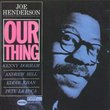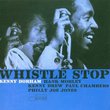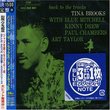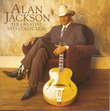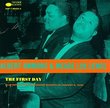| All Artists: Tina Brooks Title: Minor Move Members Wishing: 5 Total Copies: 0 Label: Toshiba EMI Japan Release Date: 11/27/1996 Album Type: Original recording remastered, Import Genres: Jazz, Pop Style: Bebop Number of Discs: 1 SwapaCD Credits: 1 |
Search - Tina Brooks :: Minor Move
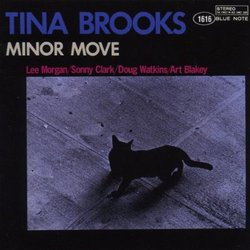 | Tina Brooks Minor Move Genres: Jazz, Pop
Tina Brooks is among the most neglected voices of the hard-bop movement, a significant tenor saxophonist who traveled in the Blue Note orbit from 1958 to 1962. He appeared as a sideman on some of the label's best-known ses... more » |
Larger Image |
CD DetailsSynopsis
Amazon.com Tina Brooks is among the most neglected voices of the hard-bop movement, a significant tenor saxophonist who traveled in the Blue Note orbit from 1958 to 1962. He appeared as a sideman on some of the label's best-known sessions--Jimmy Smith's The Sermon and Kenny Burrell's Blue Lights--but recordings under his leadership often had to wait decades to be released. Minor Move, from 1958, was the first session under his own name, first appearing in Japan in 1980. Brooks possessed significant musical virtues, including a big, warm sound (a balance of Sonny Rollins's gravity and John Coltrane's metallic shimmer) and original ways of phrasing and negotiating changes that are filled with subtle rhythmic and harmonic turns. Brooks is in the company of equals here, including the celebrated Lee Morgan and Art Blakey and the almost comparably neglected pianist Sonny Clark. The result is superb hard bop, from the blowing tunes to Brooks's rugged handling of standards. --Stuart Broomer Similar CDs
Similarly Requested CDs
|
CD ReviewsA solid album from a forgotten fallen star jazzfanmn | St Cloud, MN United States | 08/11/2000 (4 out of 5 stars) "Jazz music is fraught with young promising talent taken from the world way before their time. Tina Brooks fell prey to addiction just as he was coming into his prime, leaving us with a glimpse of what might have been. Brooks' tone on tenor is somewhere between Lester Young and Hank Mobley, with a hint of Charlie Parker. His performance is solid and he interacts well with his impressive collection of sidemen. Art Blakey's drums and Doug Watkins' bass propel Brooks' tenor, Sonny Clark's piano, and Lee Morgan's brash bright trumpet through two Brooks originals and a trio of standards. This is a solid and very enjoyable set of straight ahead hard bop in the Blue Note mold, and makes on wonder what might have been had Brooks' lived longer." Unknown master Joerg Colberg | Northampton, MA USA | 06/02/2000 (4 out of 5 stars) "I admit I bought this CD because of Tina Brook's sidemen. Of course, everybody knows Sonny Clark, Lee Morgan, or Art Blakey, but Tina Brooks? Who is Tina Brooks? It is a shame he didn't nearly get as popular as other tenor sax players of the Hard Bop area. I guess one of the reasons might be that people just didn't get to hear him that often. If I understand it correctly, this album was first published in Japan in 1980. Which is a shame because it is so good that it should have become a real classic much earlier. Among all the Blue Note sessions I know there are quite a few which are way less interesting than this one. Tina Brooks and his sidemen create a very nice atmosphere which is fairly relaxed and it swings a lot. Art Blakey on the drums is superb as usual, Sonny Clark and Lee Morgan deliver very good performances, and Tina Brooks introduces you to his way of playing the tenor sax. Very nice." Brooks' Best Samuel Chell | Kenosha,, WI United States | 03/09/2004 (5 out of 5 stars) "If you're interested in Tina Brooks, you might begin and end with this outstanding session. It's clearly superior, IMO, to "Waiting Game," "Back to the Tracks," and even the fabled "True Blue" (which I found slightly disappointing). One has only to look at the program--three durable standards plus two originals and an alternate take by Brooks--along with the personnel to see what's special about this session. Moreover, Brooks on this occasion is as strong as he is inventive, playing with a Mobley-like soulful sweetness flavored by a pungent, slightly acid aftertaste reminiscent of colleague and mentor Jackie McLean. This is the first time I've been able to understand why some Brooks' supporters claim him as an "if only" potential rival to Rollins, Coltrane or Mobley.
Morgan is equally creative, inspiring Brooks but also being spurred on to some of his most melodic work. The self-consciously "cute" affectations characteristic of his "Moanin'" date with Blakey (recorded the same year) are far less in evidence on this more flowing, straight-shooting session. As for the rhythm section, Sonny Clark's spare but inventive lines validate his cult status. Blakey and the sublime Doug Watkins prove once again that they shared a unique pulse that should have been recorded more often (listen to their vibrant beat on "The Transition Sessions"). Chambers and Philly Joe are the only two contemporaries I can think of who occasionally enter the same time zone--a kind of buoyant, suspended groove that lifts the music into a new dimension. Truth be told, I have enough quintets featuring the unmistakable "Van Gelder sound" to last me several lifetimes. But if there's room for one more, this isn't a bad choice at all. Final clincher: Larry Kart's liner notes from the 1980 reissue are some of the most literate, informative, insightful comments you're likely to see by a jazz writer. Small wonder he decided to apply his talents elsewhere." |

 Track Listings (5) - Disc #1
Track Listings (5) - Disc #1